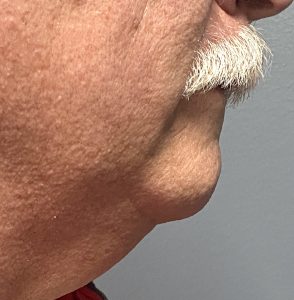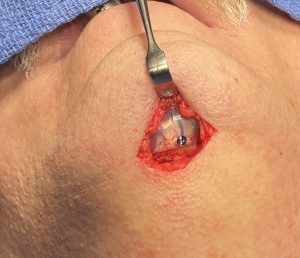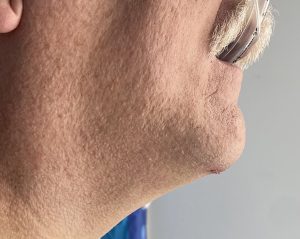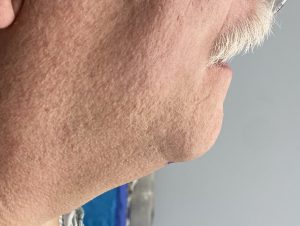Background: Chin implants remain the most commonly performed aesthetic facial augmentation procedure and recent reports indicate that it is increasing in popularity. As a single implant it has been called the most powerful facial enhancement procedure when judged by effect vs time of surgery to perform it. While it is performed in both genders it is fair to say that it is performed more in men vs women. Differences in selecting implant sizes and desired amounts of increased horizontal projection between men and women have been previously described.
What is rarely discussed in chin augmentation is the effect of patient age on implant selection and placement. It is important to remember that the older the patient is, regardless of their amount of chin deficiency, they have lived with this face for a long time. Dramatic changes, even if it normalizes chin projection and may look good to the surgeon, may be seen quite differently by the patient. The older the patient is the less tolerant they are of significant facial changes. (may not recognize themselves)
The outer unique consideration in the older/senior patient is that they will have a natural submental skin crease. This provides an almost scar free location for chin implant placement with an established skin line. Older patients are also less concerned about scars, may already have used the submental skin crease for neck rejuvenation procedures and find an intraoral approach not very appealing.



Older patients may often describe their chin augmentation goals as natural looking, ‘not too much’, I don’t want to look weird or I don’t want other people to know I had something done. What all of these statements boil down to is that they want a change but still want to look like themselves. This clearly indicates that undergoing the augmentation is preferred over doing too much. But preoperative imaging is still needed to determine the patient’s perception of what natural is and what too much actually means.
Key Points:
1) Significant microgenia can be effectively treated in older patients just as well as younger patients.
2) In older patients with significantly short chins be cautious about trying to normalize their chin projection as it may be perceived as too much.
3) The natural submental skin crease in older patients provides convenient access for chin implant placement.
Dr. Barry Eppley
World-Renowned Plastic Surgeon



